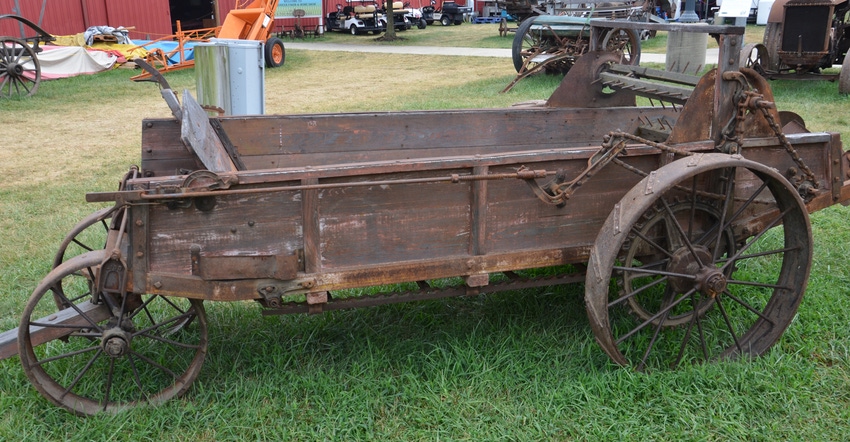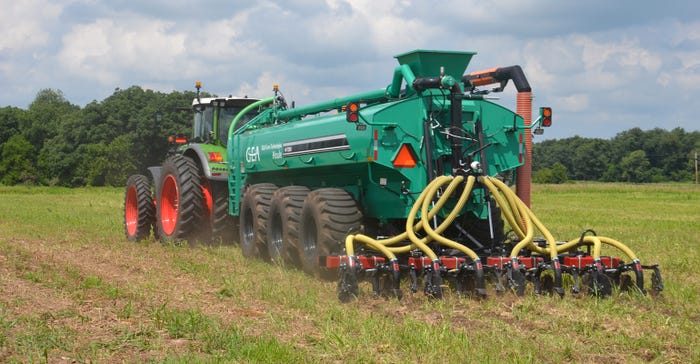September 5, 2019

If you believe Wikipedia, the first mechanical manure spreader was developed by Joseph Kemp of Canada in 1875. Horses could pull an implement that dispersed manure.
However, Joseph Oppenheim of Maria Stein, Ohio, is credited with inventing the first “widespread” manure spreader with beaters on the back to distribute manure across the field. Until then, once manure was on the ground, someone had to come back with horses and a drag to spread it out.
Oppenheim’s patented “new idea” eliminated the need for that extra trip. Ironically, Oppenheim was a schoolteacher, and his real objective was eliminating drudgery so his students wouldn’t miss as much school because they were helping haul and spread manure. Wikipedia doesn’t mention whether his invention led to more students in his classroom. But it did lead to a time-honored company that would make farm products for roughly a century: New Idea.
Oppenheim died in 1901, but the company blossomed because farmers were looking for easier ways to handle manure. Eventually, Agco bought New Idea. It discontinued all New Idea product lines in the early 2000s but still owns the name.
Technology vs. labor
Oppenheim’s first spreader, similar to the one spotted in unrestored condition recently at the Indiana State Fair, made life easier and eliminated some labor needs. But it pales in comparison to what’s available today.
A Fendt tractor, ironically also an Agco product, pulling a liquid manure wagon with an injection unit at the North American Manure Expo earlier this summer illustrates just how far technology has brought even manure hauling — once considered a lowly job. Today manure is recognized for its economic value, and injecting it not only reduces odors but also helps capture a bigger share of nutrients for use by the soil.
One person sitting inside the comfort-controlled cab of a tractor can pull a load of manure to the field, inject it and go back for another, or fill from a tanker in the field, all by pushing buttons or moving levers. Many times, more product is handled and dispensed properly compared to how it was done with the first manure spreader in a fraction of the time.
And if the operator wants, he or she can let autosteer guide the tractor and record not only where manure is applied but also how much is applied. With the right computer software, as-applied maps with rates and gallons applied can be created.

ONE-MAN OPERATION: One person sitting inside a comfort-controlled tractor cab can apply manure much faster and more efficiently today than anyone could have dreamed of when early manure spreaders first appeared.

What’s the biggest irony of all? Even though technology has reached even manure application, it hasn’t resolved labor issues in agriculture. Only a fraction of the workers needed in the late 1800s are needed on a farm today, but those workers are still hard to find.
In fact, Randy Kron, Indiana Farm Bureau president, recently mentioned farm labor concerns as one of the top national issues for agriculture. The reasons why delve into complex sociological issues and are intertwined with immigration problems.
Nevertheless, the fact remains that many farms struggle to find and keep qualified workers today. Technology was supposed to solve labor issues. It certainly made jobs easier — that’s not debatable. But finding someone to run the tractor to pull the injector and do other jobs around the farm isn’t necessarily easier than finding someone to pitch manure in 1899, or finding someone to bale hay in the 1960s.
Comments? Email [email protected].
You May Also Like




